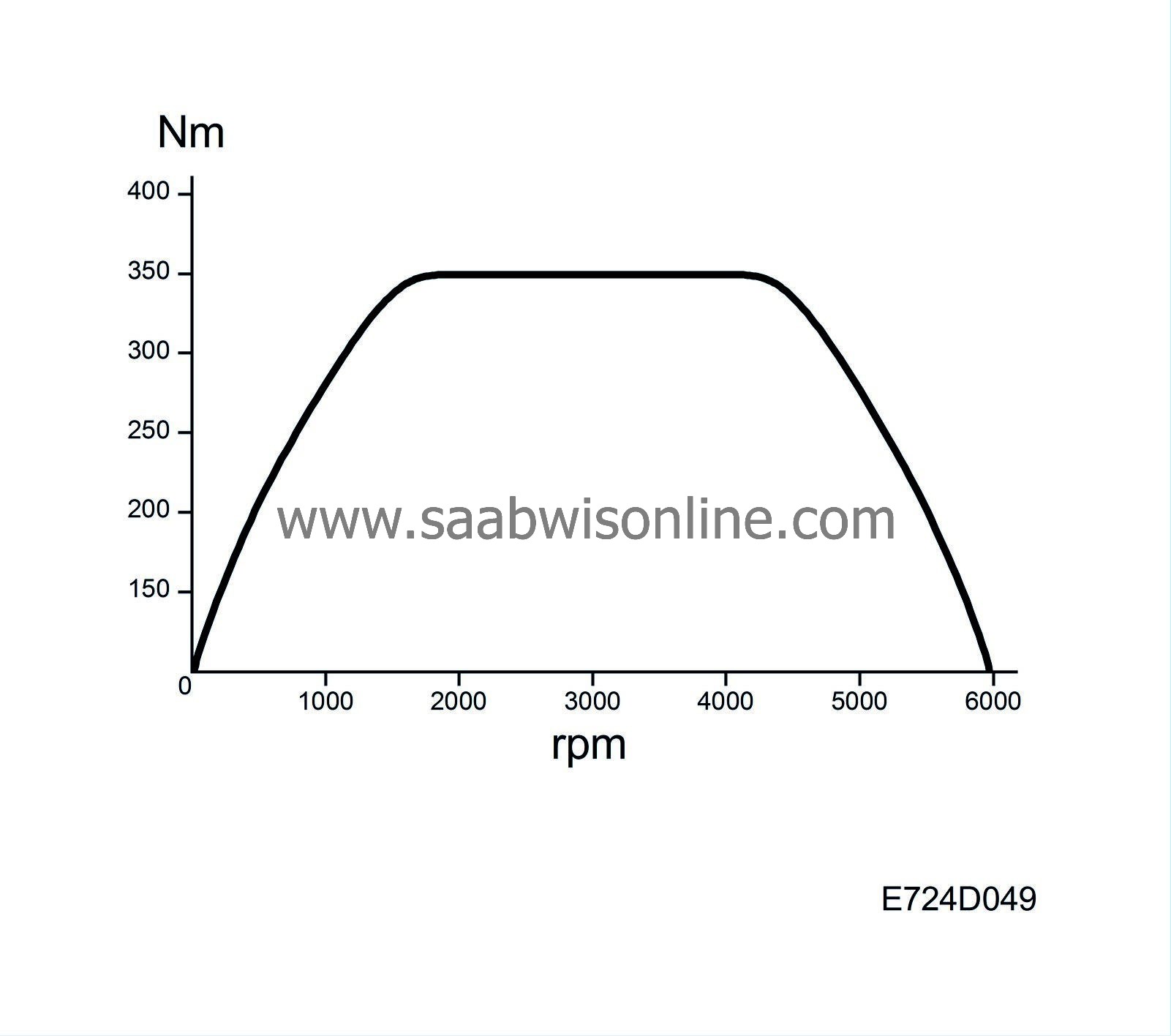Air mass limitation
| Air mass limitation |
| Maximum engine torque |
The engine torque curve is stored in the control module memory. It specifies the maximum engine torque at various engine speeds.
Engine alternative B235R with manual gearbox has a function called "overboost”, which enables a somewhat higher torque for max. 20 seconds. For further information concerning overboost, see Overboost function .
The torque is directly proportional to air mass/combustion at current engine speed.
The unit in the engine torque curve, Nm, is converted to mg air/combustion.
The value taken from the curve is the maximum air mass/combustion value the engine variant allows.
| Manual gearbox, engine torque limitation |
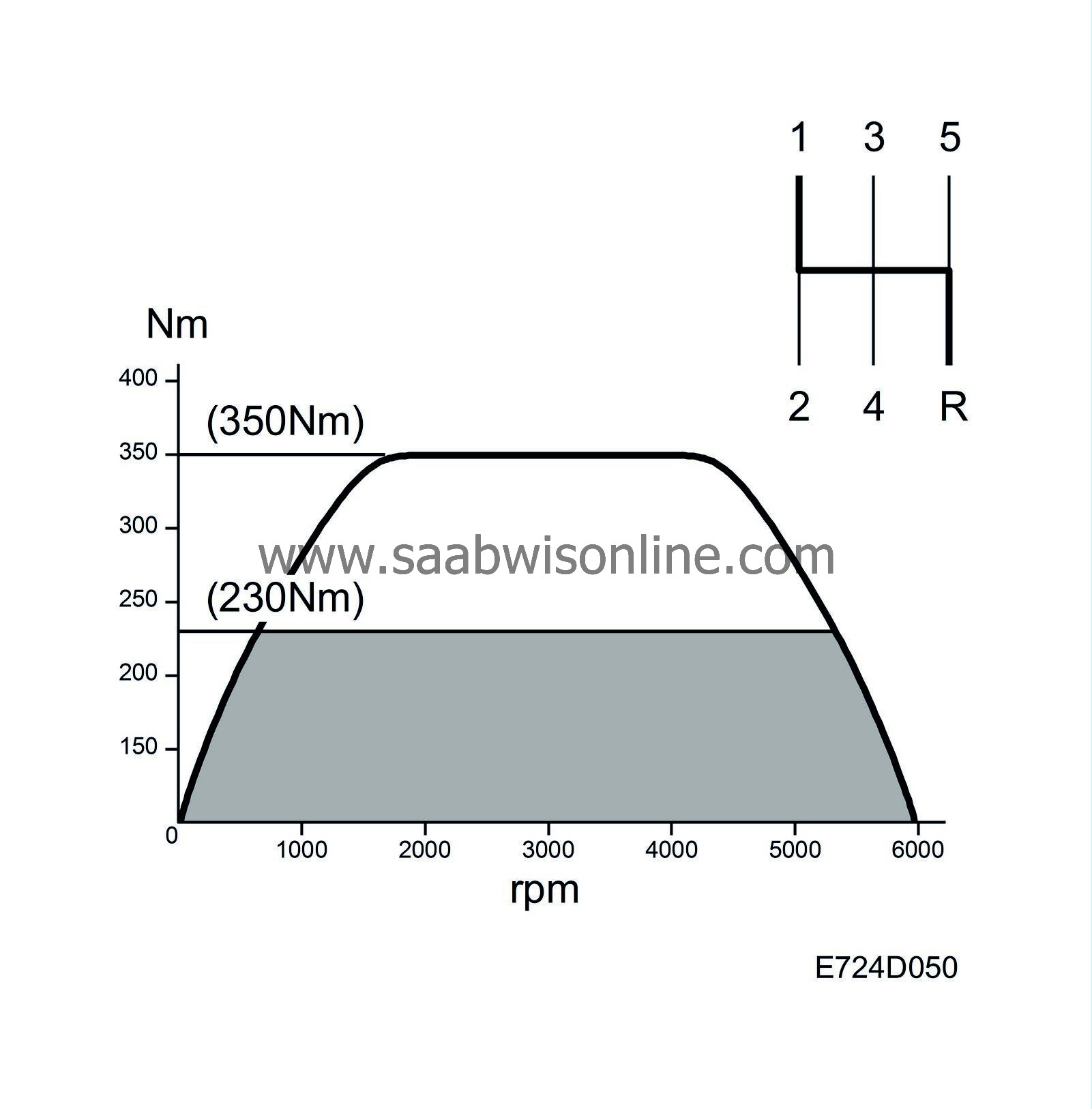
The maximum engine torque must be limited at low gear ratios for reasons of strength.
The control module calculates the engaged gear by comparing engine speed with vehicle speed.
If the gear ratio corresponds with gear 1 or R, the control module reads bus information "Reverse gear selected" from DICE to distinguish between them.
Engine torque is limited to:
On engine alternative B235E , gear 1 or R is limited to 230 Nm. For the other gears the engine torque is limited to 350 Nm. For 5th gear there is a limitation that is gradually activated if the engine speed drops below 2400 rpm. The purpose of this is to avoid vibrations.
On engine alternative B235R , gear 1 is limited to 280 Nm and reverse, R, is limited to 230 Nm. Torque limitation in gears 2-5 is 380 Nm.
The torque value is converted to mg air/combustion and represents the max. value of air mass/combustion that the gearbox allows.
| Automatic gearbox, stall limitation |

The maximum engine torque must be limited when the car is stationary and the brake pedal is depressed for reasons of strength.
Engine torque is limited to 200 Nm.
Engine torque is converted to mg air/combustion and constitutes the maximum air mass/combustion permitted by the automatic transmission.
| Automatic transmission, limitation in reverse gear |
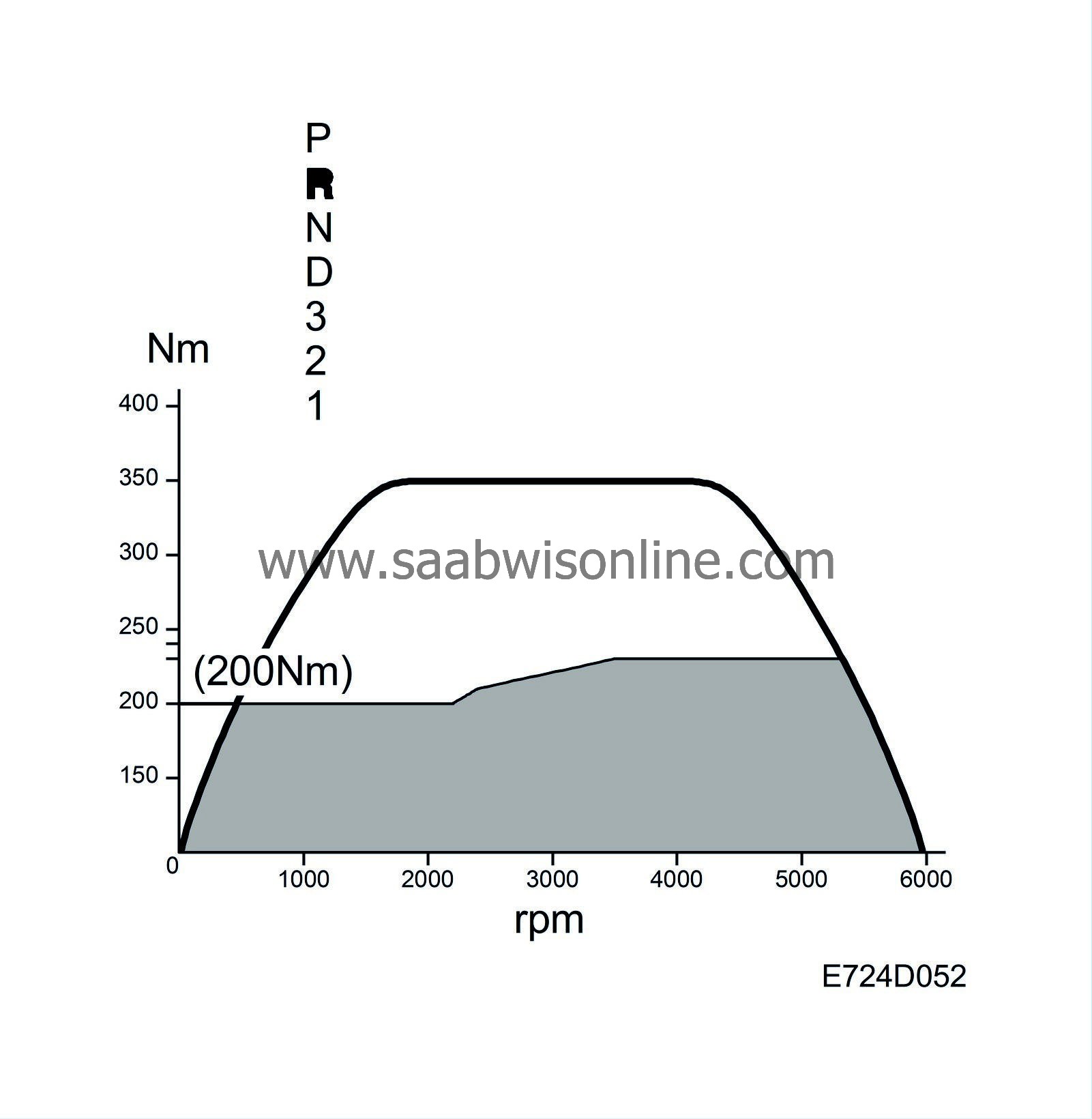
An engine-dependent torque limitation takes place when selector lever position R is selected to reduce the load on the powertrain mountings.
Engine torque is converted to mg air/combustion and constitutes the maximum air mass/combustion permitted by the automatic transmission.
| Automatic transmission, limitation in 1st gear |
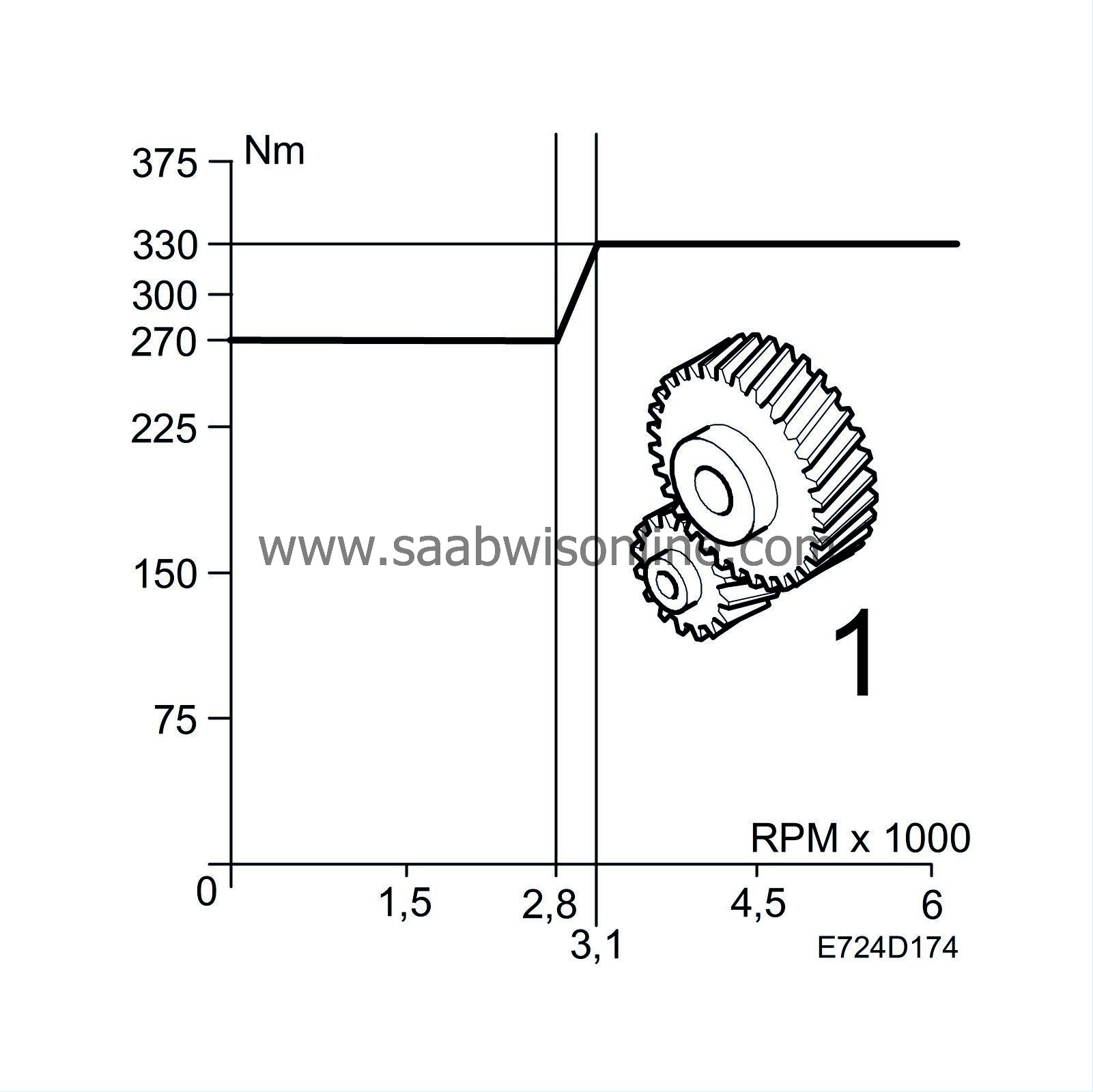
On the Saab 9-5 with engine alternative B235R and automatic transmission, engine torque is limited in low gear. When 1st gear is selected the torque is limited, the extent to which depends on the engine speed. The purpose is to reduce the load on the transmission.
The torque value is converted to mg air/combustion and represents the max. value of air mass/combustion that the transmission allows.
| TCM, engine torque limitation |
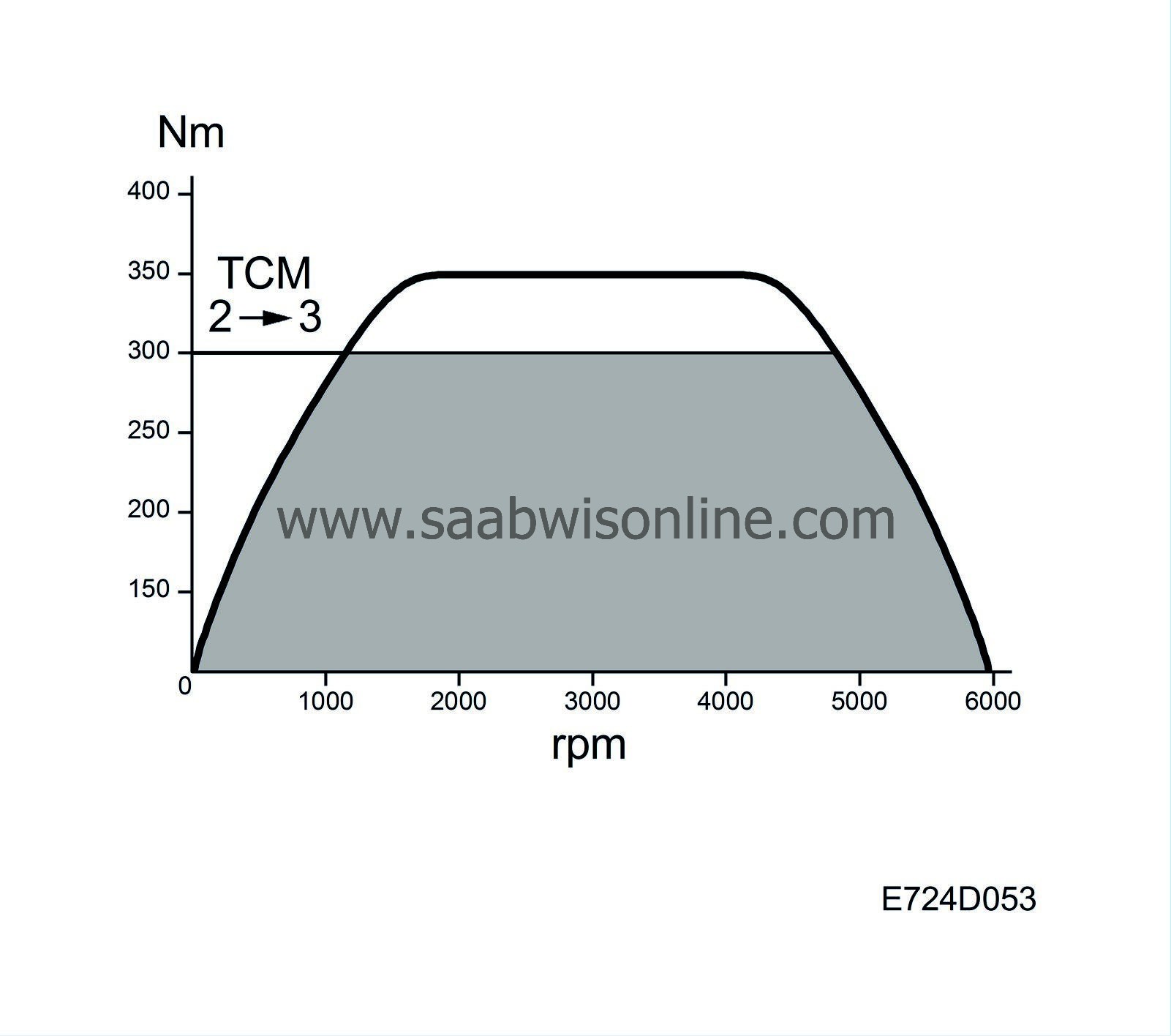
The maximum engine torque must be limited while changing gear for reasons of strength. TCM sends continuous bus information indicating the maximum engine torque.
Trionic T7 converts Nm to mg air/combustion. The value constitutes the maximum air mass/combustion permitted by the automatic transmission.
| Braking |

The maximum engine torque must be limited when the brake pedal is depressed for reasons of strength. The following three conditions must be fulfilled for this function to be activated:
| • |
B+ on the input from brake light switch, pin 63.
|
|
| • |
B+ on the input from brake and clutch pedal switches, pin 29.
|
|
| • |
Brake light ON (Bus from TWICE)
|
|
Engine torque is limited to 200 Nm.
Engine torque is converted to mg air/combustion and constitutes the maximum air mass/combustion permitted by the automatic transmission.
| Traction Control, engine torque limitation |
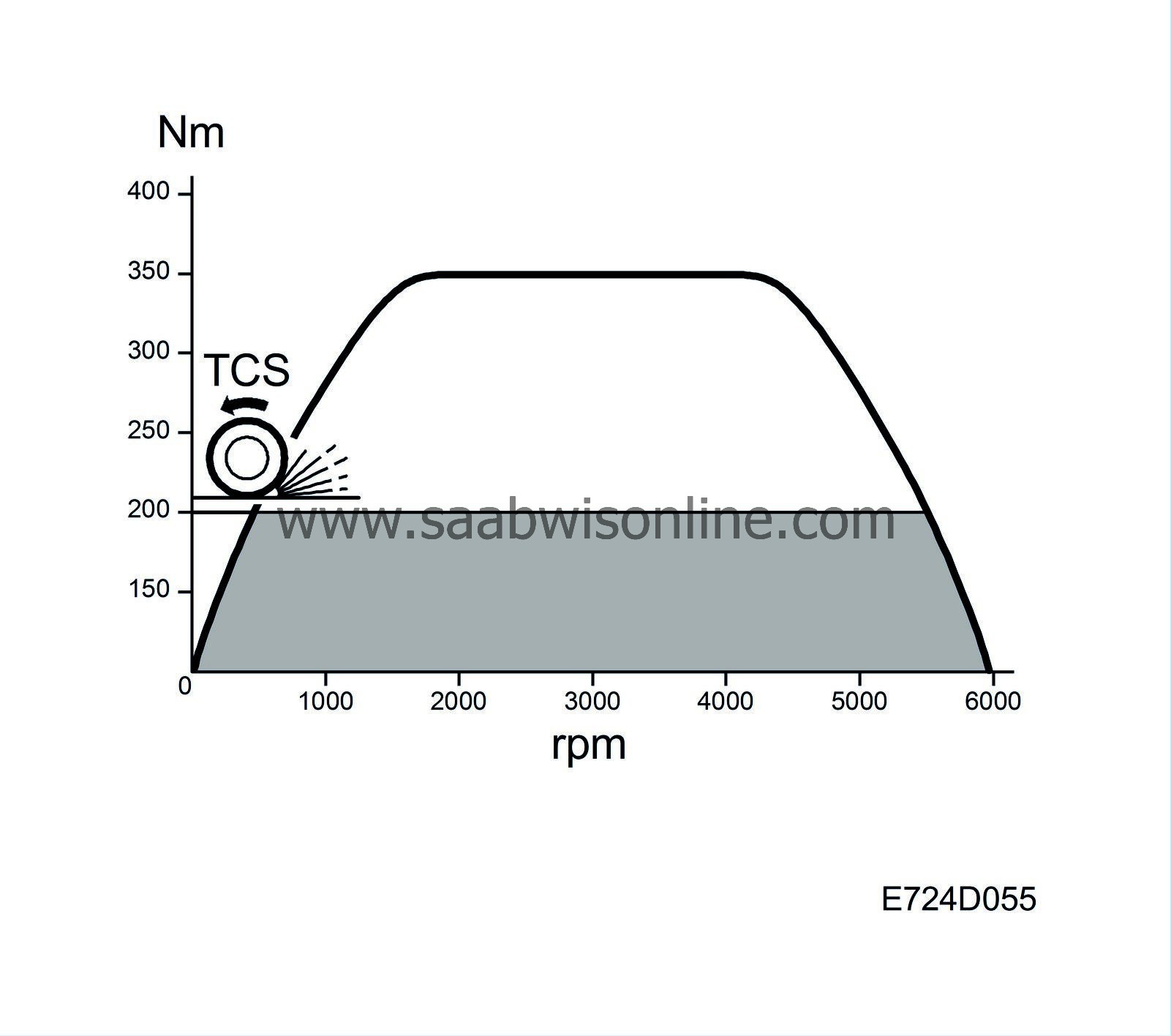
Cars with certain engine types may be equipped with Traction Control. The function for traction control can be found in the TC/ABS control module. The TCS function in the TC/ABS control module works both with reduction of engine torque (request to Trionic) and brake application on the driving wheels with TCS control. The rear wheel speed is used as a reference for comparison of both driving wheels individually. When one of the driving wheels has a higher speed than the rear wheels, what is called wheel spin occurs.
TC/ABS receives 2 bus messages from Trionic T7:
| • |
Engine torque
The value of the bus message "Engine torque” can vary between -100 Nm up to 400 Nm. TC/ABS uses the engine torque value to calculate the current drive wheel torque. |
|
| • |
Pedal position
TC/ABS uses the value to determine how much wheel spin to allow. |
|
TC/ABS uses the above values together with vehicle speed and engine speed to calculate the current gear ratio. By knowing the engine torque and current gear ratio, TC/ABS can calculate the driving wheel torque.
TC/ABS sends one bus message to Trionic T7:
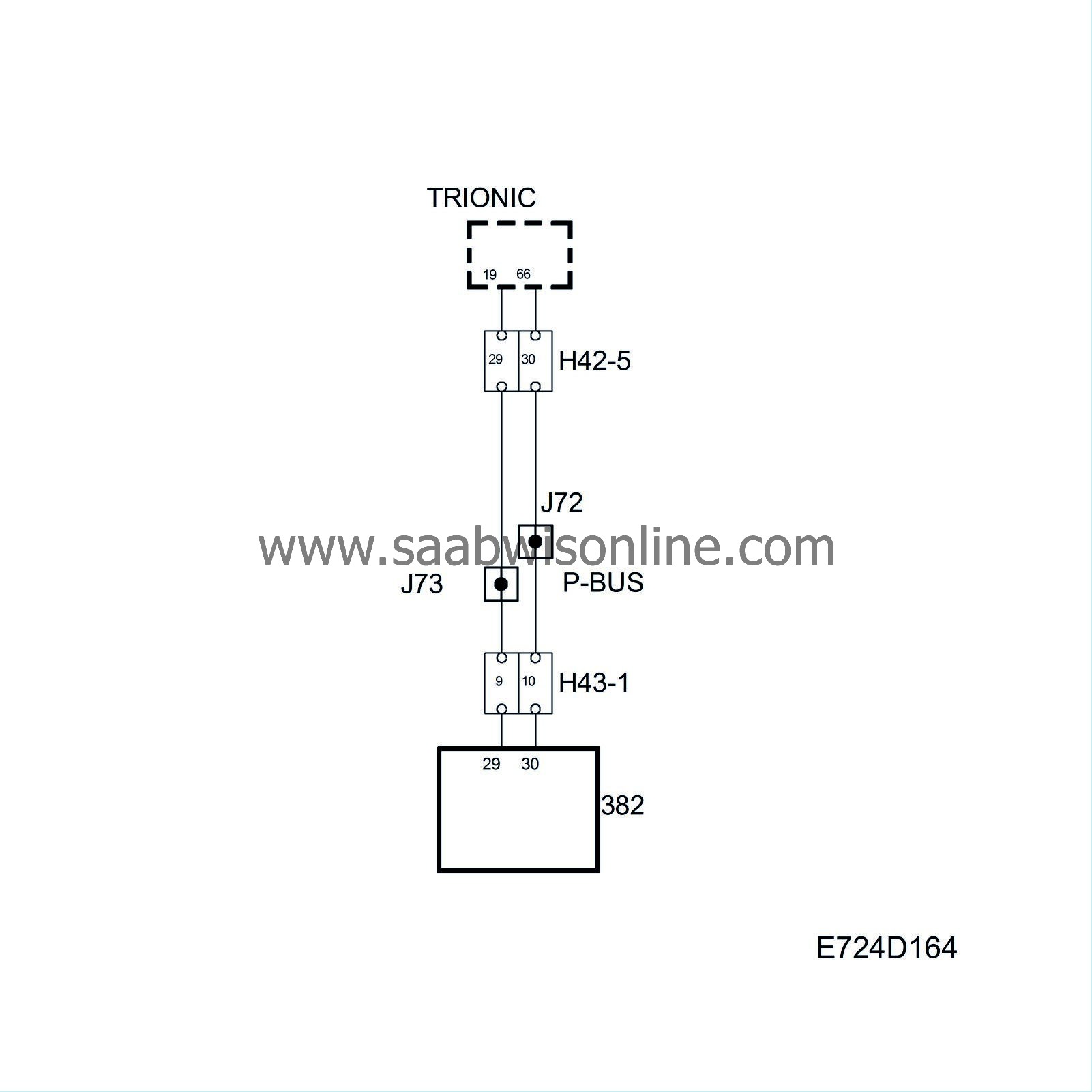
| • |
Max. permissible torque
The value of this requested torque is used for Traction Control. Trionic T7 converts Nm to mg air/combustion. The value constitutes the maximum air mass/combustion value permitted by TC/ABS. |
|
For further information about Traction Control and TC/ABS, see TC/ABS 5.3, System overview .
| Diagnostics |
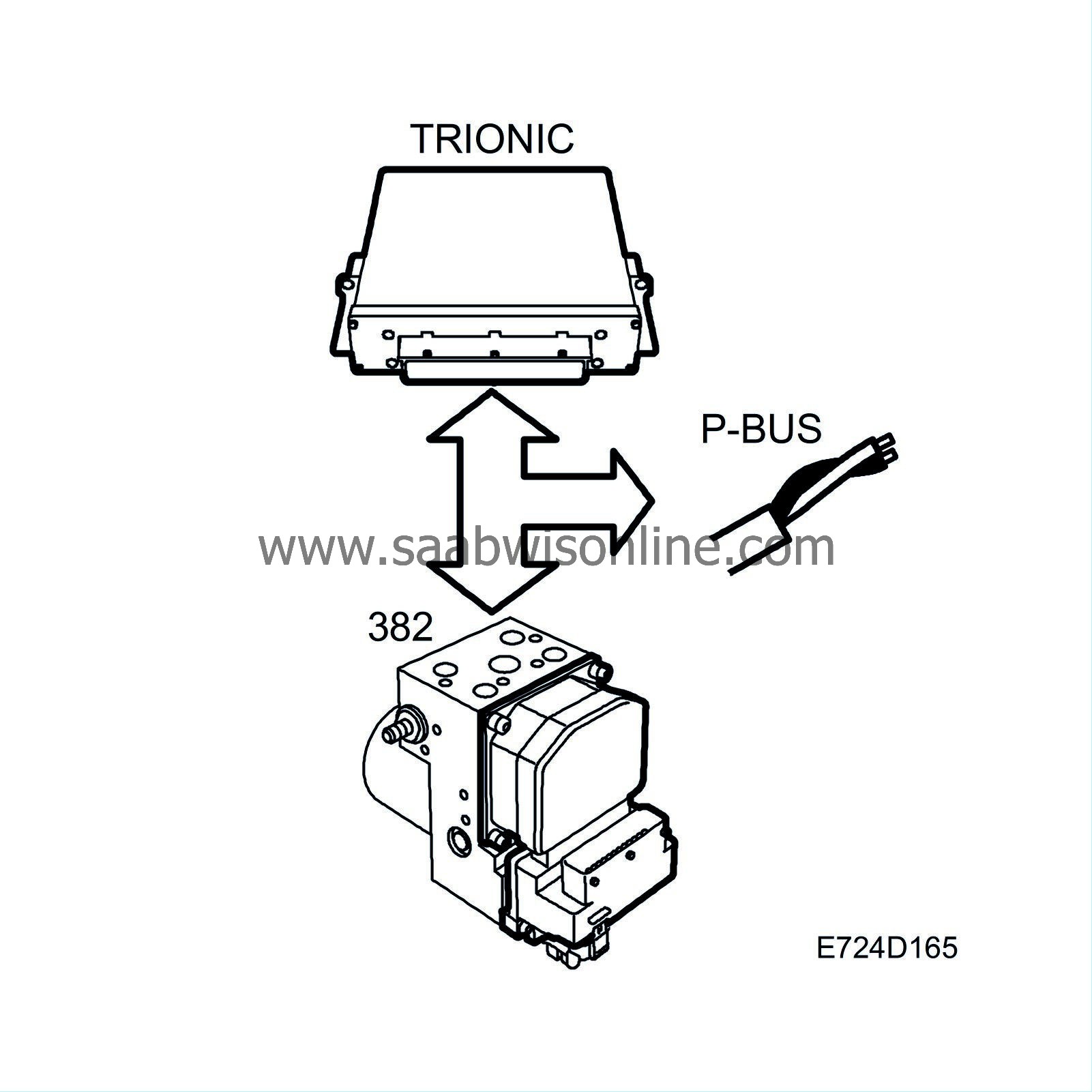
Trionic can detect three different faults that affect the TC function. TC/ABS generates a DTC and TCS OFF comes on.
The three faults are:
| • |
No communication with the TC/ABS control module.
|
|
| • |
Trionic detects that TC/ABS is programmed for another engine type (the programmed type is sent from TC/ABS on P-bus, TC/ABS generates a DTC).
|
|
| • |
Fault in the Trionic throttle control (limp-home). With this fault, the CHECK ENGINE lamp will also go on and the cause of the fault can be found in Trionic.
|
|
| Knock limitation |

Knock control first retards the ignition timing for each cylinder. If the mean value for the ignition retardation for all the cylinder exceeds a certain value, fuel enrichment will take place.
If the mean value for ignition retardation increases further, the maximum permissible air mass/combustion will be reduced.
This reduction takes place continuously as the ignition retardation increases.
The value constitutes the maximum air mass/combustion value permitted by knock control.
| Vehicle speed limitation |
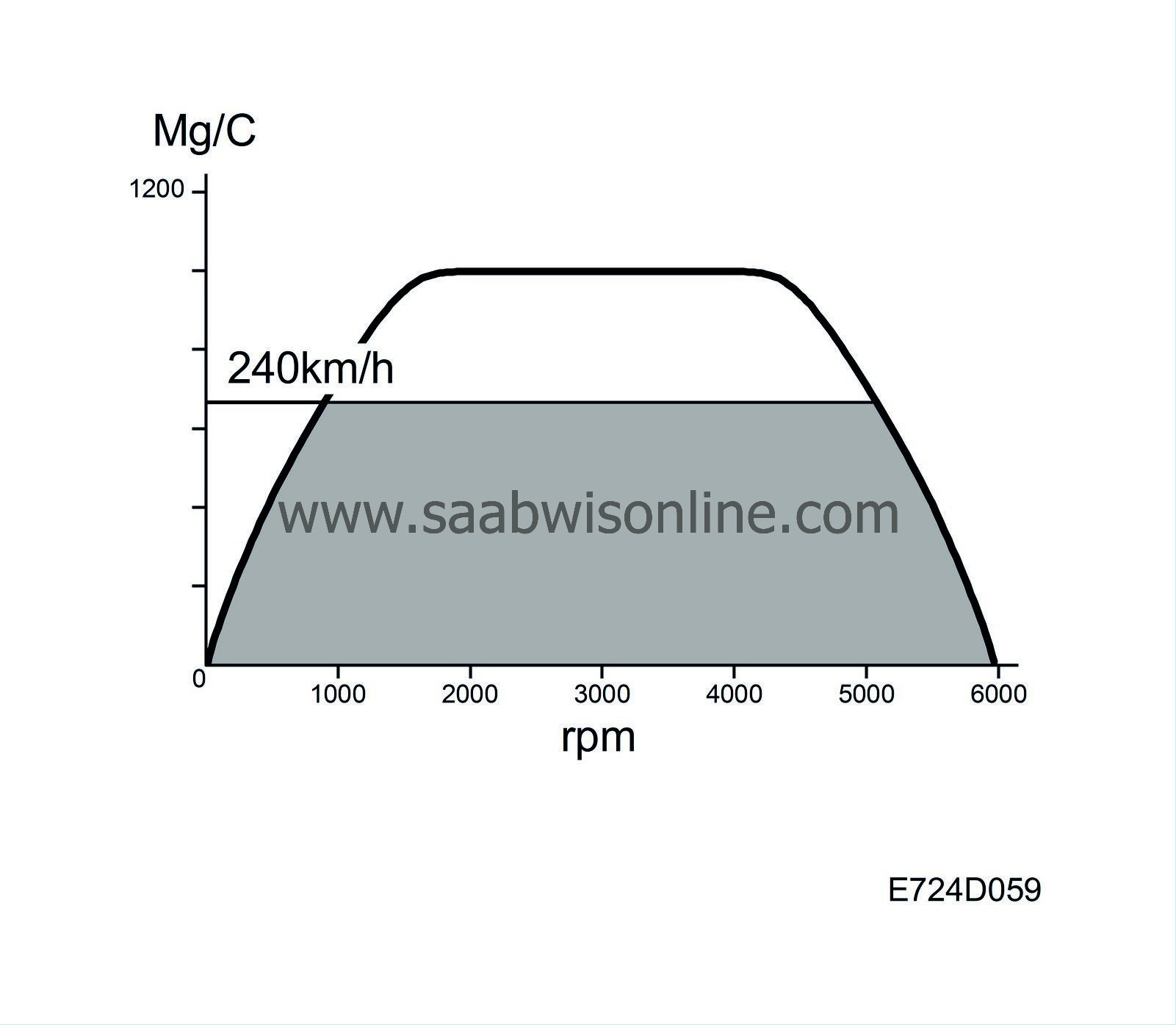
When the vehicle speed reaches the highest speed permitted, engine torque will be limited due to limitation of the maximum permitted air mass/combustion.
The highest permitted speed varies between engine alternatives. For engine alternative B235E the highest permitted speed is 240 km/h and for alternative B235R the equivalent value is 250 km/h.
| Engine speed limitation |

When engine speed reaches 6000 rpm and the coolant temperature drops below 60°C, engine torque is limited due to limitation of the maximum permitted air mass/combustion. If the coolant temperature is above 80°C a further 100 rpm is allowed, i.e. maximum permitted air mass/combustion is limited at 6100 rpm.
| Turbo speed limitation |
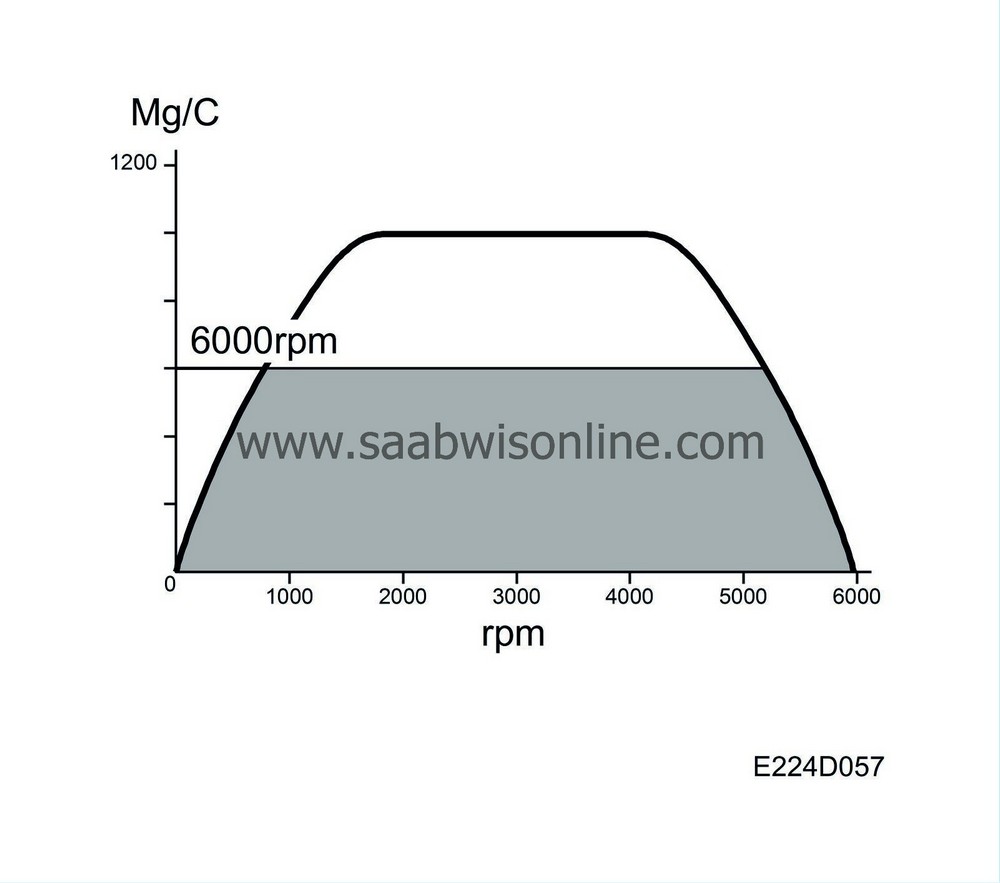
At low barometric pressures, the maximum permitted air mass/combustion is limited to protect the turbo from overrevving. The function is dependent on atmospheric pressure and engine speed.
| Limitations after system faults |
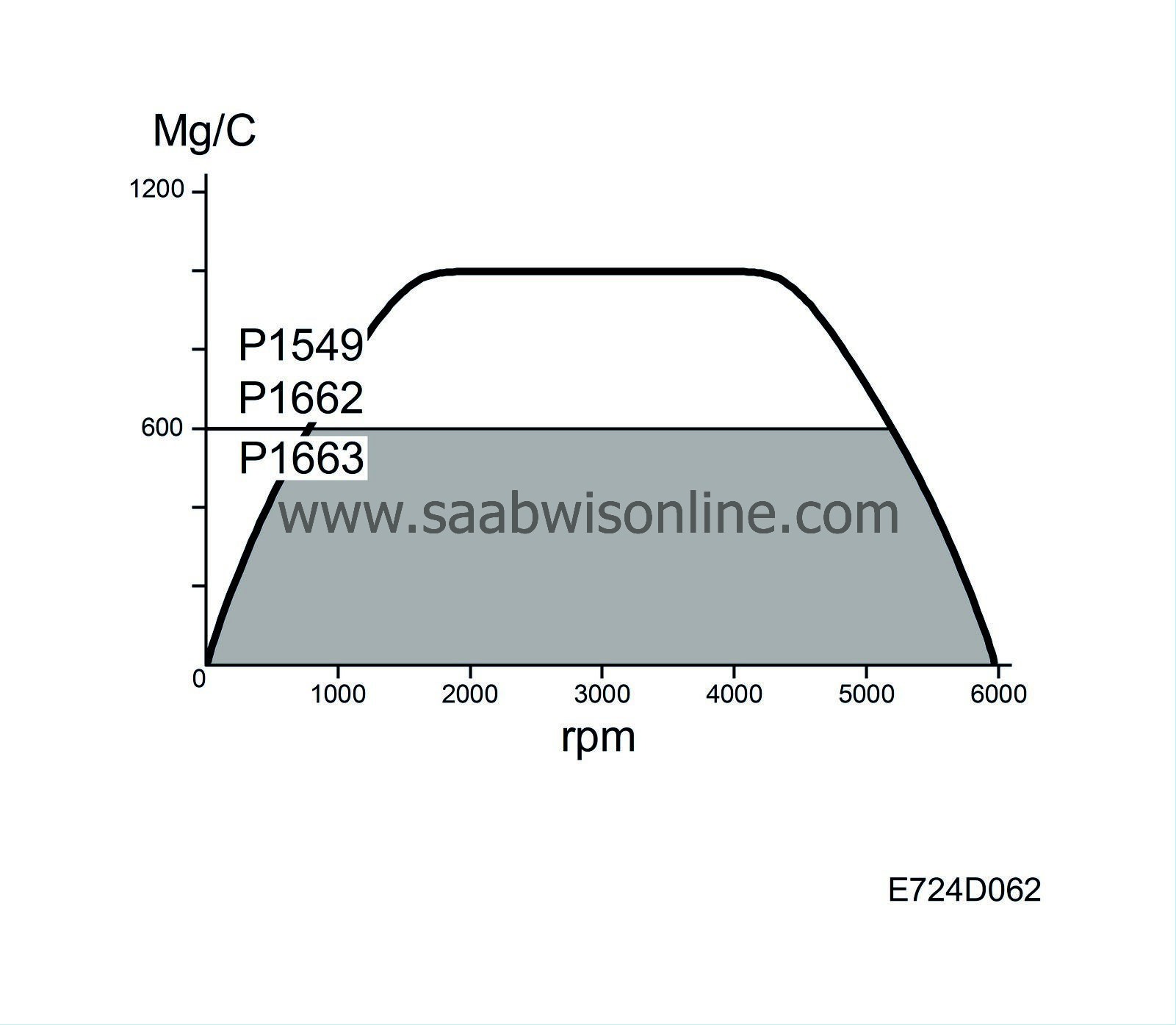
The maximum permissible air mass per combustion is limited in the following cases:
| • |
Electrical fault in the charge air control valve
|
|
| • |
Mechanical fault in the charge air control valve causing the current air mass to exceed that requested.
|
|

